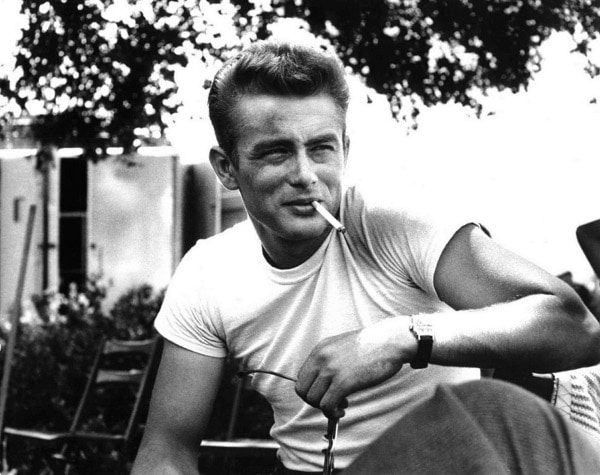
With our archives now 3,500+ articles deep, we’ve decided to republish a classic piece each Friday to help our newer readers discover some of the best, evergreen gems from the past. This article was originally published in July 2015.
When it comes to t-shirts and style, opinions often fall into two camps.
There are those men, the vast majority of them, who see tees as a wardrobe staple that is appropriate for nearly every occasion, and can be worn with little to no thought.
Then there are the traditionalists, small in number, but vocal, who feel t-shirts are utterly juvenile and sloppy-looking, and should never be worn outside a gym or away from the beach.
I’d like to suggest a middle path: t-shirts as a classic, versatile piece of clothing appropriate to wear on some occasions, but not others. Allow me also to suggest that even if t-shirts constitute a simple staple of one’s wardrobe, there are ways to wear them better, and worse.
Today we’ll cover the ins and outs of this stylish, common sense approach to the tee, and explore how, when, and where to rock one. Welcome to the best damn guide to men’s t-shirts on the internet.
The History of the T-Shirt
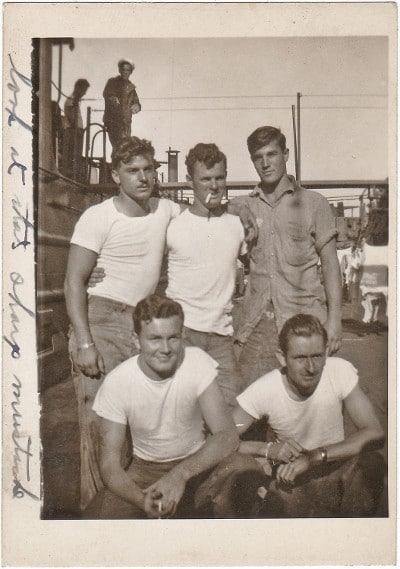
While t-shirts have a distinctly modern feel, their origins — as an undershirt — go back over a century.
T-shirts get their name from the T-shape formed by their boxy body and attached sleeves. And such T-shaped garments go back centuries; originally made from wool or silk, these sets of underwear often covered the whole body, were designed to absorb perspiration, and served as a barrier between a man’s skin and the more expensive garments he wanted to protect from bodily grime.
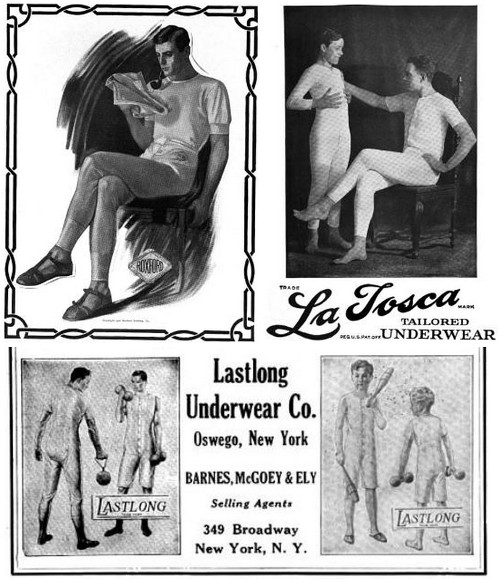
The original “undershirts” were united with bottoms to create a set of one-piece underwear — hence, the “union” suit. When manufacturers began creating separated, two-piece sets, the modern undershirt was born.
During the Industrial Revolution, advancements in weaving and the manufacturing of cotton fabric birthed undergarments that were more breathable and fitted than their often baggy and rough forerunners (though they were far from as soft and cool as tees are today). “T-shirts” during the 19th century commonly took the form of the tops to two-piece union suits men wore under their clothes, which miners and dockworkers took to wearing alone with trousers while they labored.
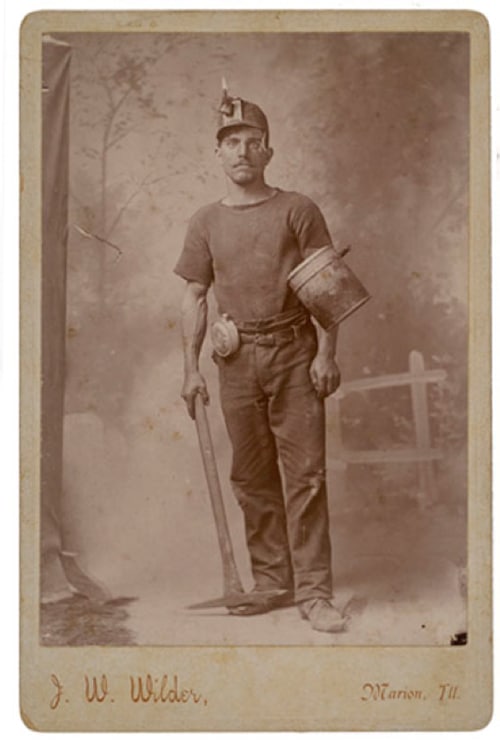
Around the turn of the 20th century, the US Navy began issuing undershirts to its sailors, and other branches of the military would follow suit in the decades to come. These undershirts were designed to be worn under one’s uniform, but soldiers, sailors, and Marines, especially those fighting in sweltering topical climates, often removed their uniform top in order to work just in their tees and trousers.
Garments specially designed to be worn as undershirts were also available to the public. Comfortable, inexpensive, and easy to clean, they were adopted by farmers, ranchers, and laborers of all kinds, as well as athletes and sporting enthusiasts. In the 1940s tees-as-outerwear also started to become popular play clothes for young boys, who didn’t have to follow as strict a dress code as older men, and who were notorious for getting dirty.
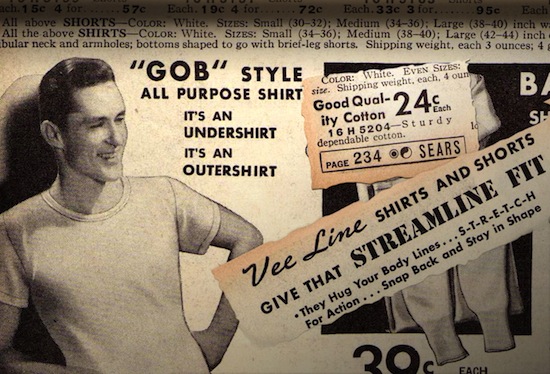
WWII lent the undershirt greater acceptance as outerwear, as well as some heroic cachet. Soldiers continued to wear them back at home around the house, and civilians adopted the practice as well. As a 1940s Sears, Roebuck and Co. catalog read, “You needn’t be a soldier to have your own personal t-shirt.”
After WWII, veterans continued to wear their undershirts with trousers while working around the house. Then in the 1950s, films like The Wild Ones, A Streetcar Named Desire, and Rebel Without a Cause, popularized the undershirt as stand-alone outerwear. Marlon Brando and James Dean lent the tee an air of edgy rebelliousness, turning it into an emblem of masculine cool. And as so commonly happens, the middle-class soon co-opted as their own what had formerly been working class wear.
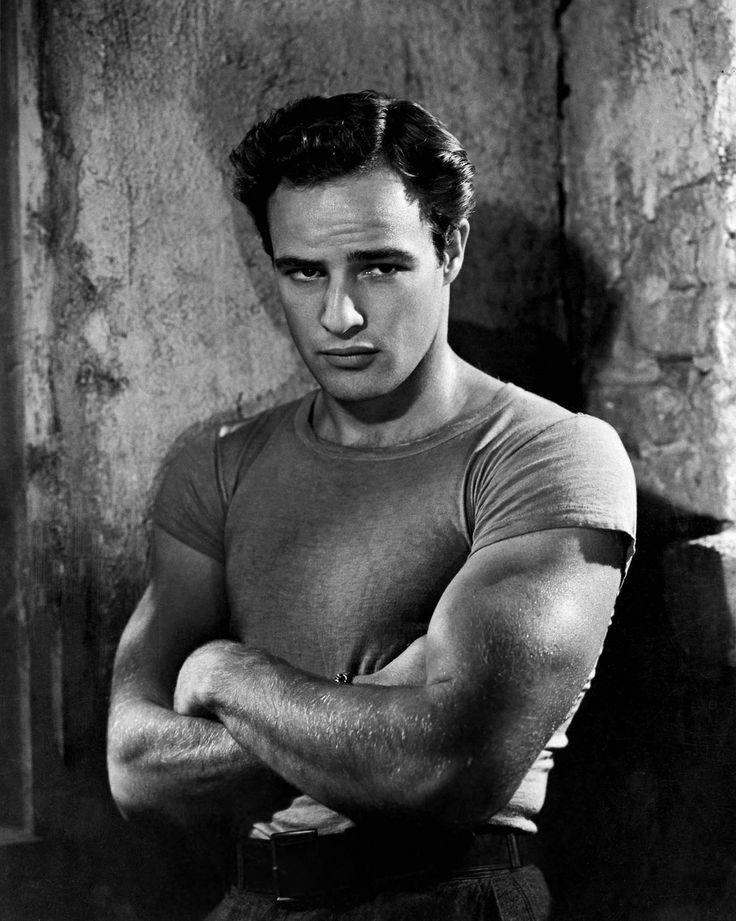
Worn by brooding movie stars like Brando and Dean, as well as beatnik poets like Jack Kerouac, t-shirts became a symbol of one’s allegiance with the working man, and disdain for authority and mainstream culture.
Advancements in screen-printing in the 1960s birthed a new wave of graphic tees that sported everything from band names to political slogans. T-shirts became one of the great democratizers of American clothing; while the cut, tailoring, and fabric of one’s garments had formerly signaled one’s identity and class, standardized, inexpensive tees became the new vehicles for personal expression.
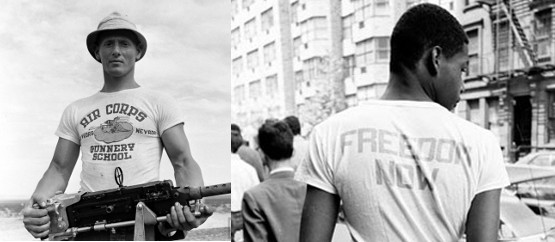
Graphic tees go all the way back to the 30s and 40s, as is seen in the 1942 Life photograph on the left. But they really took off in the 60s, along with advances in screen-printing.
And so it was that a piece of clothing you wouldn’t have seen on a single person walking down the street 75 years ago, became the defacto national uniform of the United States.
When to Wear a T-Shirt
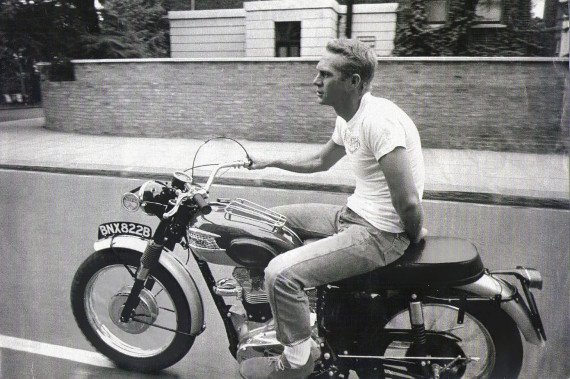
It should not be surprising that a garment that started out as underwear, and a staple for little boys, has retained something of its juvenile feel and reputation as the most casual of casual clothing. It’s for this reason that style purists advocate for tees playing a minimal role in a man’s wardrobe, and like to point out that in many other countries, wearing one by itself will make you look sloppy and underdressed.
Yet, t-shirts also have a rugged, iconoclastic history, and maintain the comfort, accessibility, and practicality that made them so popular in the first place. They may never be wedding or funeral wear, but, especially when worn right, they can be stylish and suitable for more than just going to the beach or the gym.
The trick is simply knowing when donning a t-shirt is both appropriate and well-advised, a determination which can be made by thinking through a few factors:
What’s the dress code? Tees are not appropriate for formal situations all the way down to “Casual Fridays” at work (unless you work in a very casual office). Anything that feels like an “event” is not the place for a t-shirt. They’re best for activities and hang-outs that are loosely organized and laid-back.
How active will you be? Tees were made for labor, sports, and generally getting things done. The more you’ll be moving and sweating, the more appropriate wearing a t-shirt will be.
How old are you? T-shirts are better suited for young men, than those in their post-college years.
What’s your build? Nearly all clothes look better on a fit physique, but this is especially true of t-shirts. If you’re overweight or thin, the tee will either cling to and emphasize your belly, or drape lifelessly over your skinny frame. So too, the contrast between the sleeve and your skin will draw attention to your alternately pudgy or bony arms. Thus thin and overweight men always look better in garments like dress shirts and sports jackets that add some structure to their frame, build out their shoulders, take in their waist, and form a more masculine v-shape. Even casual tops like short-sleeved henleys and polos are more flattering for large men, as they include details around the neckline that draw attention towards the face and away from the belly. These options are just as easy and comfortable as t-shirts, and are nearly always a better choice for most men, even those who are fit and can more readily get away with wearing tees.
Do you want to make a good first impression? Any way you slice it, t-shirts are not the best-looking garment out there, regardless of your body type. So whenever you’re out doing something where you might want to make a good first impression, it’s better to wear something just a little sharper. That means tees are great for hanging out around the house, get-togethers with old friends, and running errands (especially if you’re married; a bachelor never knows if he’ll meet a special lady at the grocery store!), but are less ideal for parties and get-togethers where you’re going to be meeting lots of new people.
How to Choose a T-Shirt
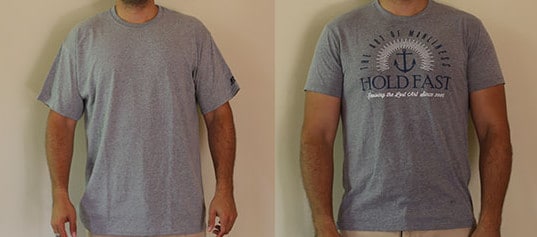
Things like fit, material, and design can all have a big effect on how a t-shirt looks.
Fit
Fit is the cornerstone of good style. But while we often think of this dimension in regards to garments like the suit and dress shirt, it’s important to get a good fit in your t-shirts, too.
Size/Tightness. A t-shirt should be neither too baggy nor too tight. If it’s too big, it will drape and sag like a pillowcase and be unflattering. Too tight and you’ll look like a stuffed sausage — a look that can read as some combination of narcissistic, flamboyant, and/or douchey. If you’re in shape, and have a good build, you can lean towards tighter over looser. If you’re carrying extra weight, leans towards a looser fit — but don’t go too far, as too much extra fabric will only make you look larger rather than smaller.
Shoulder seams. The seams where the sleeves attach to the body should ideally exactly align with where your shoulder ends rather than lower on your arm or towards your neck.
Sleeves. A tee’s sleeves should hit about halfway up your upper arm. Sleeves that extend a little farther down can look proportional if you’re very tall.
Length. The bottom hem of tee should hit no higher than your hips, at least cover your waistband, and ideally extend a few inches below it. Any shorter and you’re heading into midriff territory, and run the risk of showing your back/butt crack/belly when you bend over. Longer than that and the shirt starts trending into a nightgown.
Shape. Avoid boxy tees that wear like a sandwich board with sleeves. You want the tee to be cut so it follows the shape of your body a little.
A well-fitting tee that hits all these metrics can be hard to find but is worth looking for. And while it may mean $25 instead of that $5 touristy tee, you’ll notice the difference and won’t go back.
Collar/Neckline
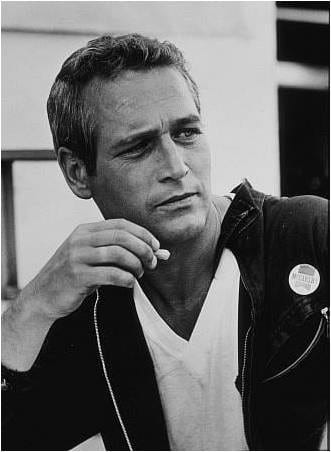
T-shirts come with two main types of necklines: the crew and the v-neck. Each works best according to the look one is going for, as well as the proportions of your face and body.
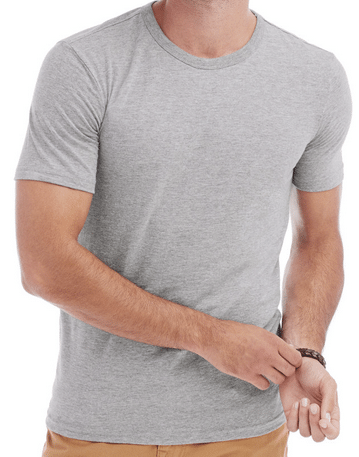
The crew collar. This is the most classic option, and offers a timeless look. It best suits men who have a slight build and frame, as the collar draws the viewer’s eye out, broadening the neckline and creating the appearance of squarer shoulders. The crew collar is also a good choice for men with longer necks and narrower faces, as it balances and adds proportion to these features.
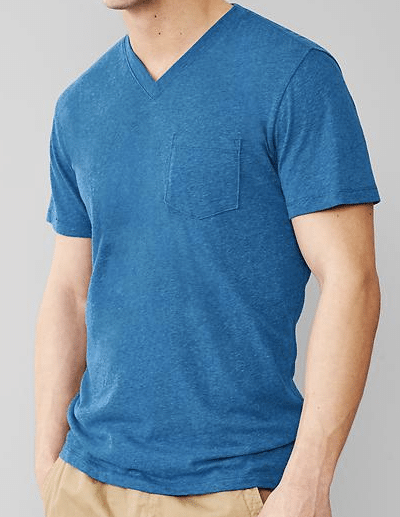
The v-neck. A v-neck has a slightly less formal feel than the crew collar, and adds a little more visual interest and style to the standard tee. It’s well-suited for the shorter man, as it makes one appear less boxy and adds a bit of height to the appearance. It complements men with rounder and/or wider faces as well. I would not recommend a v-neck for those larger in size, however, as the v tends to draw the eye down to the belly.
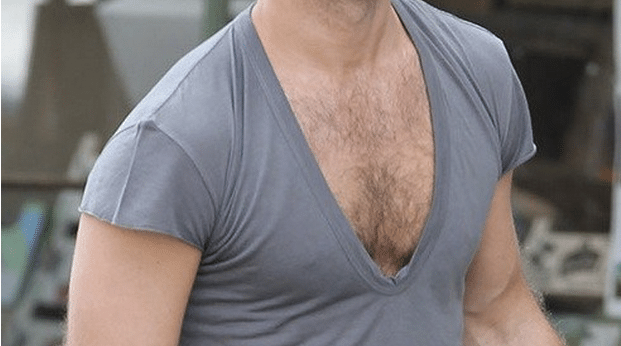
Showing a little chest hair is okay when you wear a v-neck, but avoid too deep of a v; the point of the v should hit no more than about 3 inches from the collarbone line. Leave the plunging necklines to the ladies.
There are other types of tee necklines out there — like the scoop or boat neck — but these are rarely a good look for men.
Material
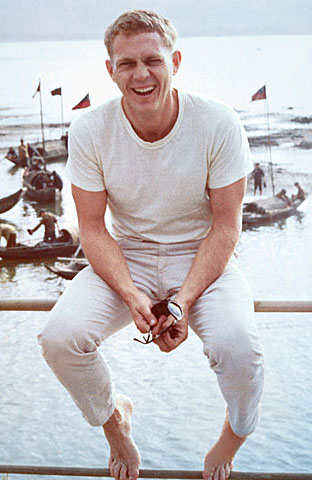
In general, choosing t-shirts made from 100% cotton is the way to go. Natural, soft, cool, and static-resistant, cotton looks and feels great. A 50/50 blend of polyester is a decent option as well; the synthetic fiber is less breathable, pills more easily from wear, and increases static, but makes the shirt less moisture absorbent and prone to wrinkling and shrinking. Tees made entirely from special synthetic fabrics may wick away perspiration better, but are only appropriate for workout wear, and unless you’re working up a big sweat, feel a lot less comfortable than pure cotton.
There isn’t necessarily a correlation between the thickness of a t-shirt’s fabric and its quality; pima and Egyptian cotton, for example, are made with longer fibers and are lighter than regular cotton but also softer and more durable. In general, however, thicker tees look more substantial and put-together. Thinner, gauzier tees tend to look cheaper and sloppier, and can cling to your belly/love handles in an unflattering way.
Thinner tees in a neutral color also tend to look more like undershirts than t-shirts. The main difference between the two garments is fabric weight; undershirts are thinner, and also fit more tightly in order to soak up perspiration.
Color/Pattern/Design
T-shirts can be broken into two broad categories: classic and graphic.
Classic Tees
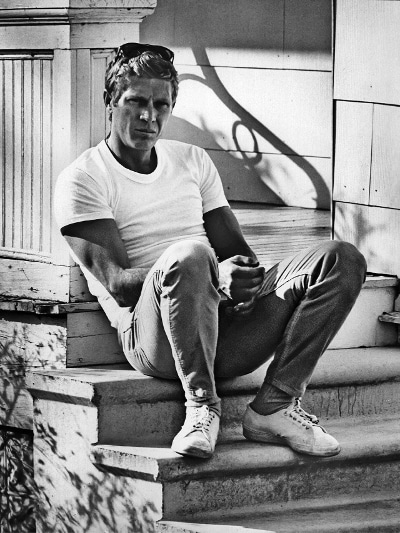
The most classic looking tees are those that come in traditional solid colors:
- White — with its origins in the undershirts of sailors and soldiers, is the granddaddy of them all. When paired with jeans, it still evokes echoes of the “rebels without a cause” who turned the garment into outerwear in the post-war period.
- Navy — almost always sharp-looking.
- Gray — a flattering color, but easily shows armpit sweat.
- Black — is hardest to pull off, as it looks a little starker and harder (though that may be what you’re going for).
Other colors from reds to greens to purples can work fine too, depending on your skin tone.
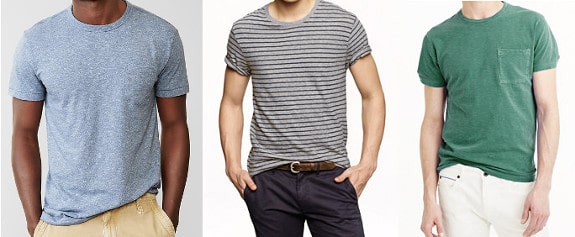
Left: Heathered or marled solid colors look more casual, but are handsome. Middle: Striped shirts are right behind solid colors in classic appearance, and are a good way to add some variety to your tee collection. Right: Pockets on tees are also a nice touch.
Graphic Tees
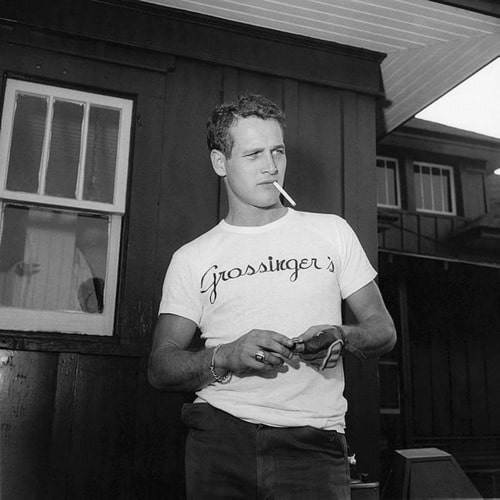
Graphic tees came on the scene later than their solid-colored counterparts, and thus have a more modern, and younger, feel to them. They’re also more casual. And the bolder/bigger the graphic gets, the more casual it becomes. Thus, graphic tees of all kinds are best reserved for things like going to the gym, running errands, and laid-back get-togethers. Tees from your alma mater or your favorite sports team work well for watching the game at home with friends, or at the stadium, but not for dinner parties.
Choose graphic tees that sport interesting and tasteful designs; avoid giant, screaming logos, metallics, funny gags, and ironic images, all of which read as lowbrow and rather juvenile.
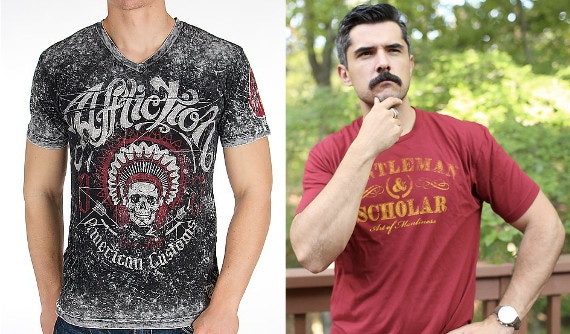
Graphic t-shirts that are overly busy don’t come off well. Keep the designs simple and tasteful. I may be biased, but I think our AoM tees meet this mark well!
T-shirts that include a bit of inspiration can help you get in the right mindset for an activity; I know putting on something like my Strength and Honor tee before hitting the gym reminds me to get to work. A graphic tee can be a good conversation starter too, but the message shouldn’t overwhelm your first impression, nor cause an unfavorable reaction before you’ve even opened your mouth. Don’t lead with your t-shirt.
(By the way, if you have a bunch of graphic tees from high school or college that are no longer really wearable, but you can’t get rid of for sentimental reasons, a good solution is to have them turned into a quilt.)
Tips for Wearing a Tee With Style
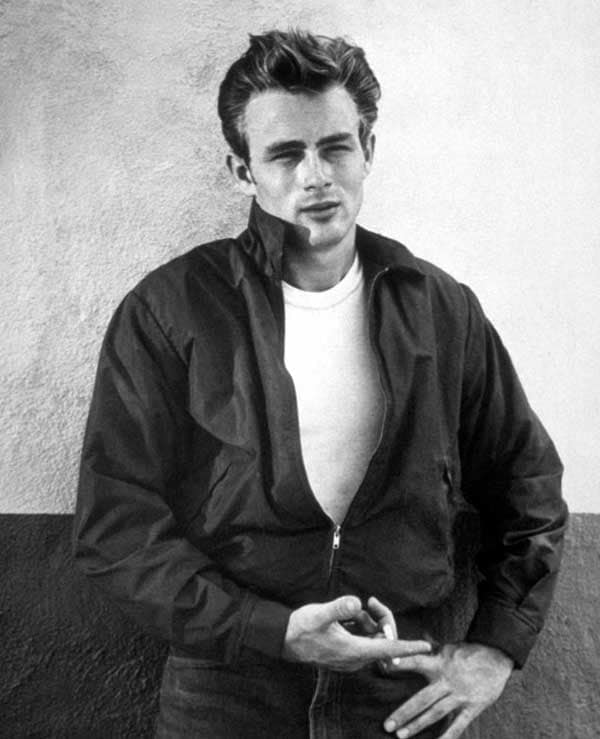
Pair solid-colored white or gray tees with dark denim or khakis. An incredibly classic look that’s hard to do wrong. Crewnecks look especially smart with khakis.
Pair navy/blue tees with khakis. Lighter pants with a darker shirt generally looks better than blue-on-blue.
If the dominating color of a graphic tee is dark, pair with a lighter bottom. And vice versa.
Layer with care. While some modern dudes have adopted the sport jacket/blazer + t-shirt look, many style experts aren’t big fans of it. The relative formality of the jacket jars with the casualness of the tee. If you’re going to put a tee under a sport coat, the jacket needs to be an especially casual one — think texture, soft draping, and natural fabric. Even then, it’s going to be a better look if you swap the tee for a casual button-down.
On the other hand, a t-shirt can look fantastic underneath a leather jacket or a blouson (à la Dean above), or even a cardigan sweater.
Don’t tuck your tees in. It’s almost always going to come off as nerdy. Here’s which shirts you tuck, and which you don’t.
Conclusion
T-shirts have become a simple go-to staple of most men’s casual wardrobes. But that doesn’t mean you should grab and wear them without any thought. By paying attention to things like fit, color, and style, you can elevate the humble tee into a versatile, classic piece of clothing that feels great and looks sharp.


